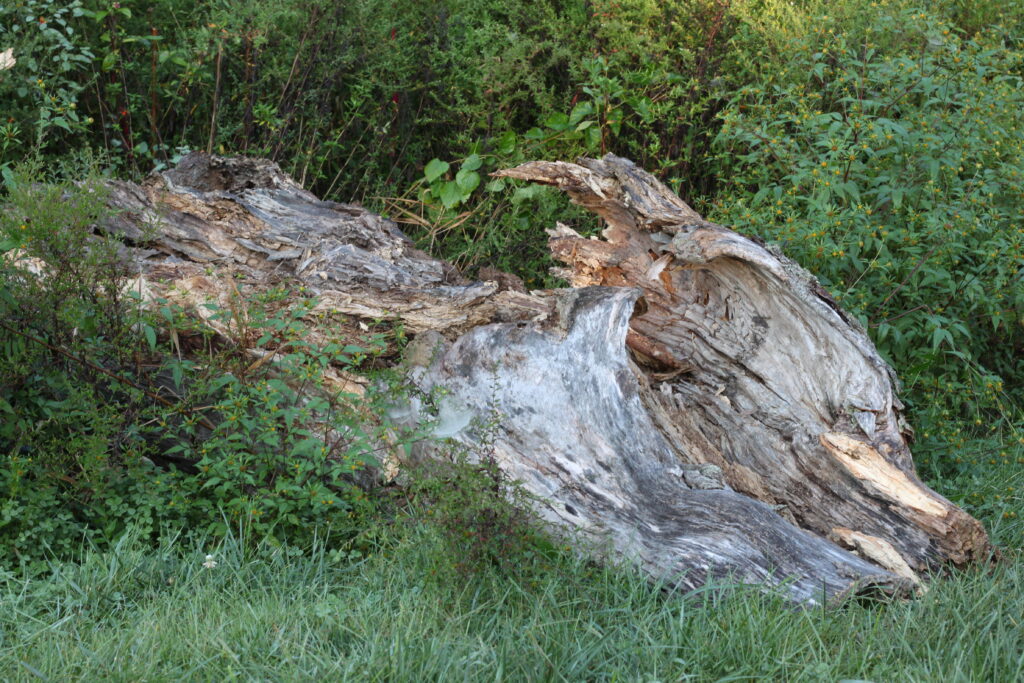When a tree dies in the forest, it does not immediately collapse; instead it decays while standing in place for a few years, continuously dropping its smaller branches to the ground. It’s Nature’s way of forest management, for the snag, which is what the dead tree is called, provides countless benefits to wildlife and to a woodland’s ability of regenerating itself. Birds, bats, squirrels, racoons and other animals make their nests in the crevices and hollow cavities of snags. Insects, mosses, lichens and fungi that thrive in dead wood provide food for woodpeckers, nut hedges, song birds and small mammals. Squirrels and other animals use snags to store food that they gather in the fall. Tall snags become perches from which raptors survey the forest and dive for prey.
Eventually, the snag collapses into a heap of decaying wood lying on the ground. But that is not the end of the tree’s beneficial presence in the world. The mosses, lichens and fungi living in that heap of disintegrating wood help to return vital nutrients to the soil through the nitrogen cycle. And the decaying wood on the floor acts as a “nurse log” for new tree seedlings offering them the rich nutrients they need to get established.
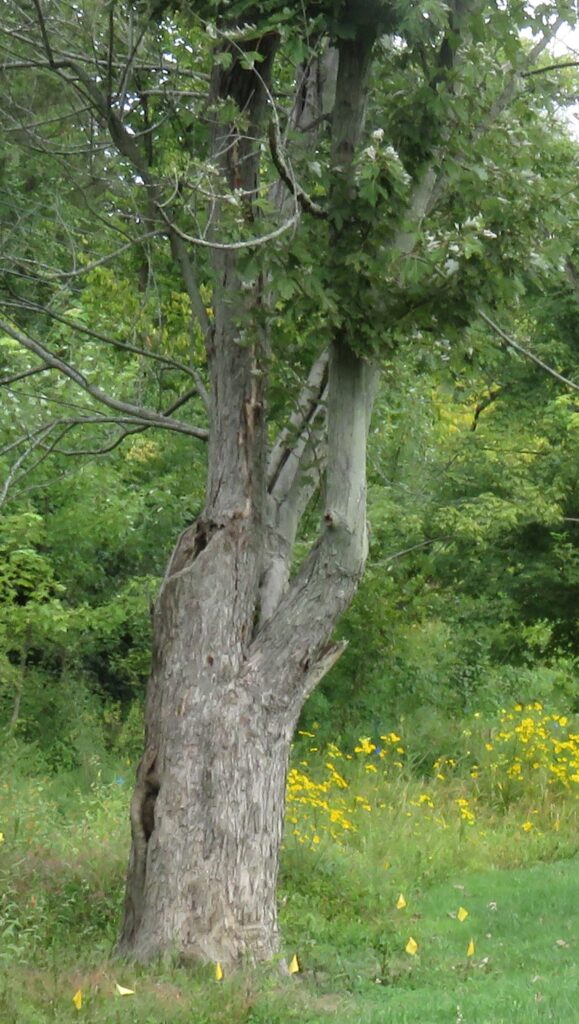
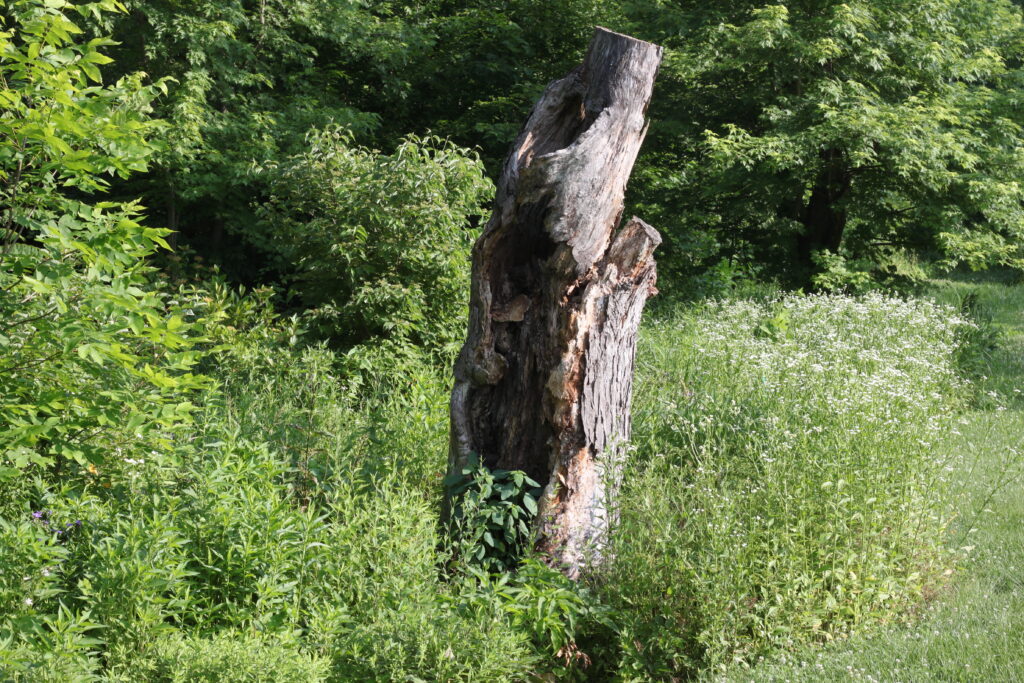
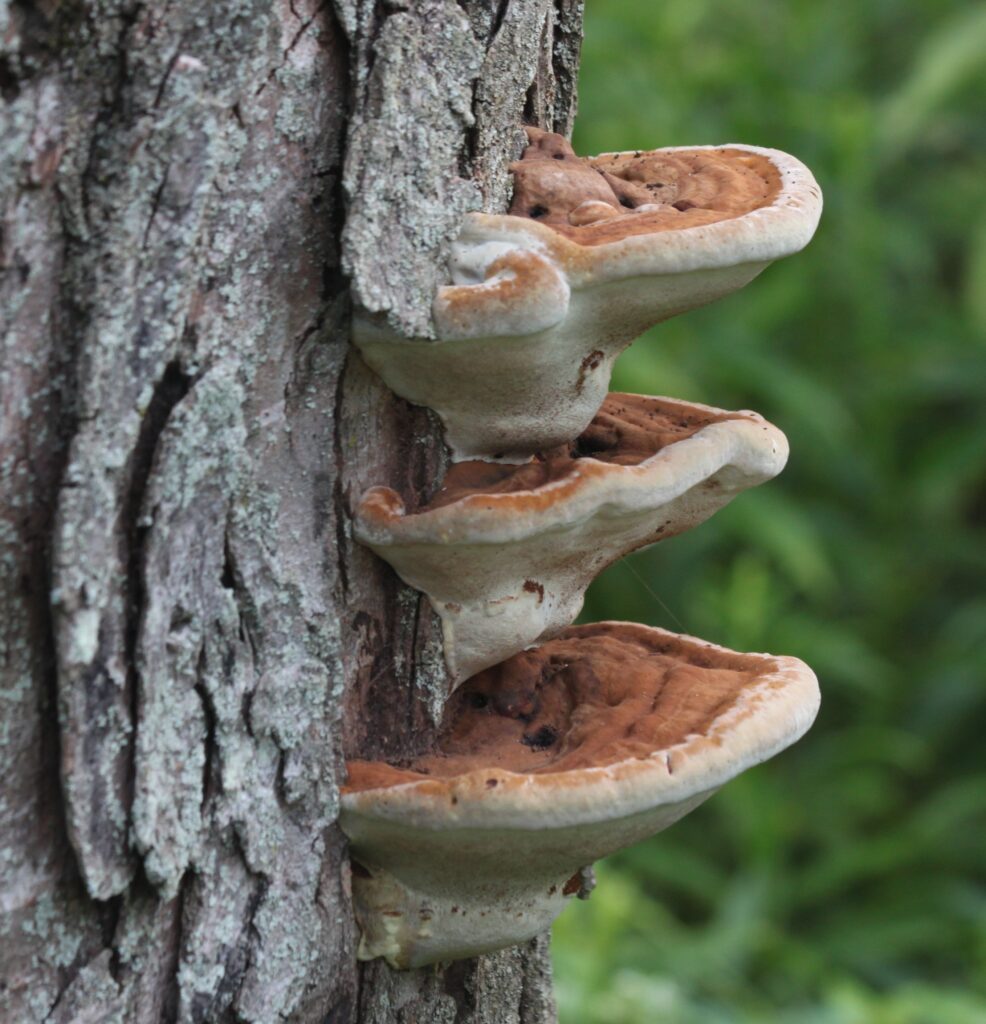
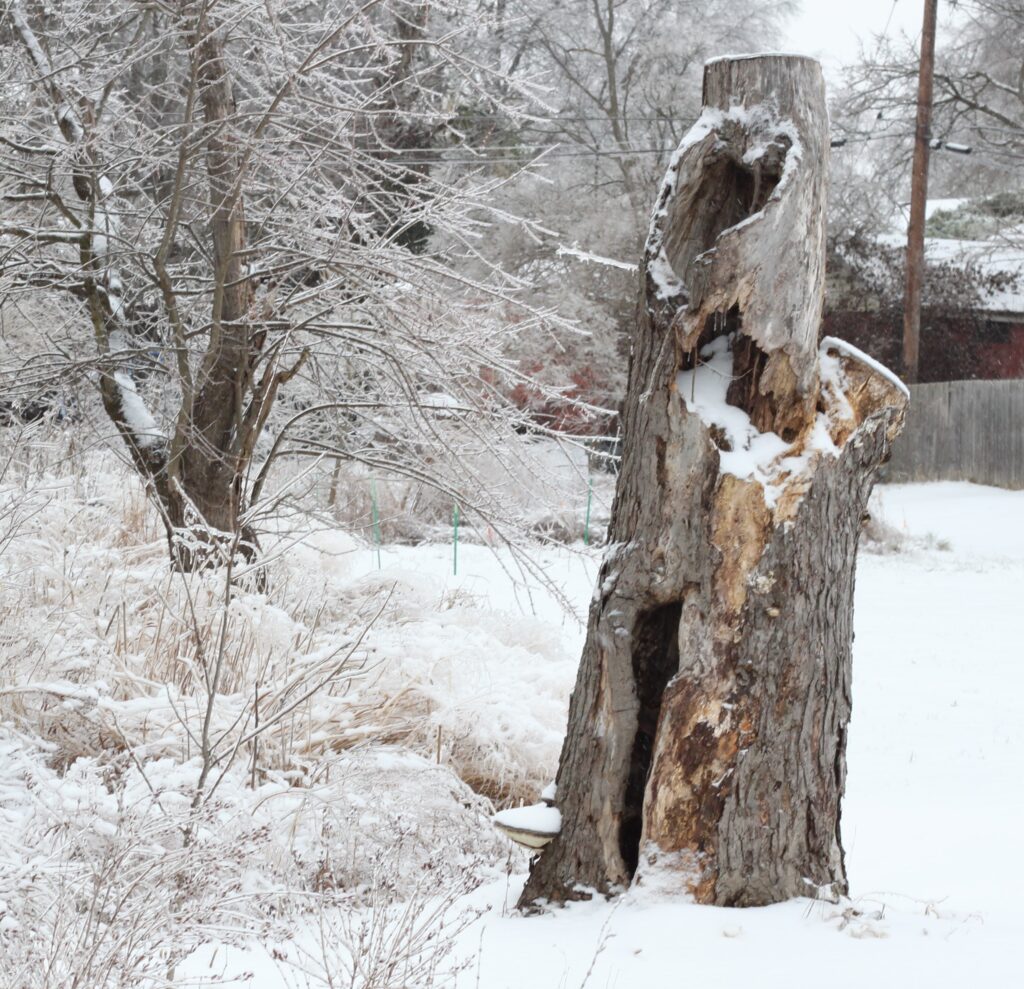
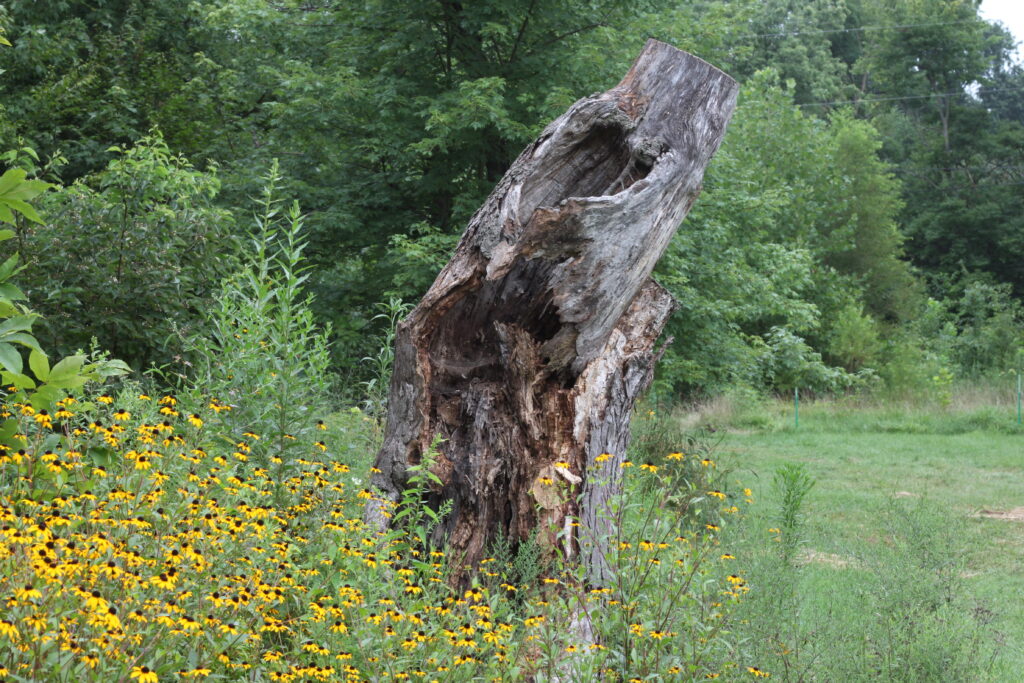
Of course, a suburban garden or even a city park is not a forest. And while snags can provide the same benefits in urban environments, they will need to be managed. It is not a good idea to leave dead branches high up in a tree where they can fall on people or structures below. So, usually only the trunk of a tree makes a good urban snag.
The photos here document the transformation of a tree that in 2017 still had some life in it but in 2022 turned into a heap of decaying wood on the ground. When the Idle Hour Neighborhood planted a stream buffer in the greenspace along a branch of West Hickman Creek, four silver maples grew there. Two of these are still alive, but the other two were too far gone to be saved. City arborists cut off all their branches in September 2017, leaving the trunks standing to slowly decay in place. The smaller and weaker one collapsed on September 19, exactly five years after it had been reduced to a snag.
